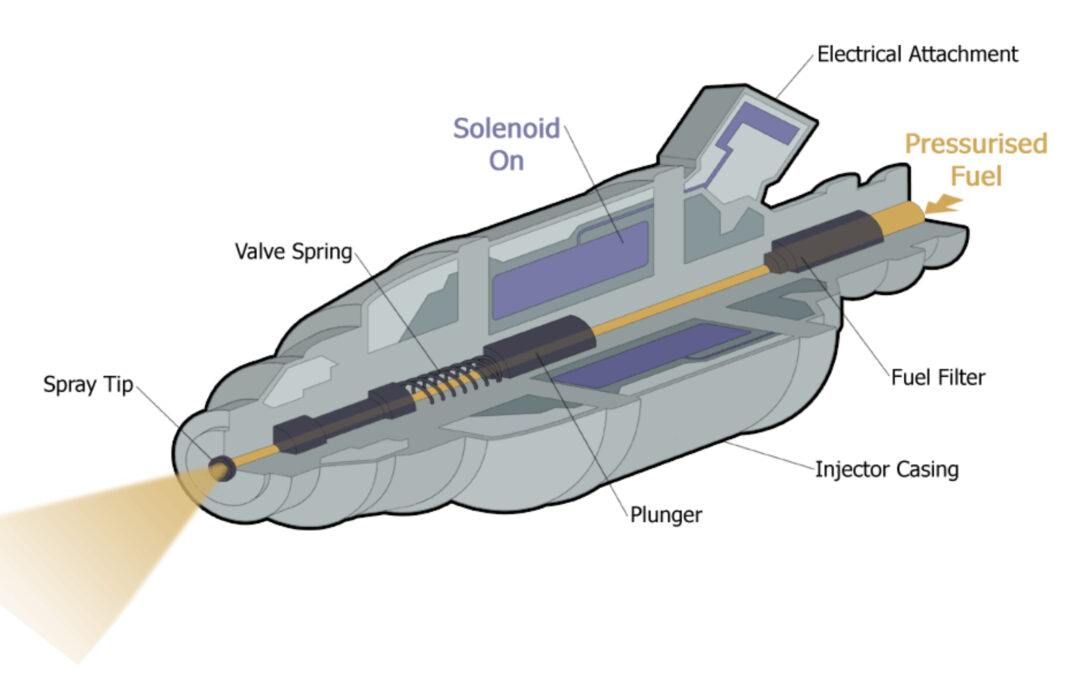Solenoid valves can control and regulate fluids and gases on board a ship. But when do they need to be inspected or changed? In a recent Mars Report, a tanker was confronted with a malfunctioning solenoid valve for which there was no guidance on how to maintain it.
The Mars reports are compiled (anonymously) by The Nautical Institute to prevent other accidents from happening. A summary of the incident:
A tanker had finished a discharging operation and crew were carrying out pre-departure checks and preparations while awaiting the pilot. During these checks, an engineer started up the main engine lube oil separator. An alarm indicated an excessive amount of water in the clean oil outlet of the separator. The engineer immediately reported this issue. Further checks found that the main engine lubricating oil had been contaminated with fresh water.
The master cancelled the departure to allow time to further investigate the anomaly, and notified the company, local authorities, harbour master, charterer, and classification society of the delay, as required in the SMS.
Investigation findings
The investigation revealed that the solenoid valve on the main engine lube oil separator had malfunctioned. The internal orifice of the solenoid valve had allowed leakage through to the clean oil outlet and sump tank oil.
Although the maintenance interval for the lube oil separators was set at 4000 hours or at least once a year, there was no detailed guidance to vessel crew about solenoid valve maintenance and inspection requirements. It was not anticipated that the internal components of solenoid valves could become worn beyond specifications within this period.
Advice from The Nautical Institute
To prevent such malfunctions from occurring, The Nautical Institute advises the following:
- The time interval for scheduled maintenance should be reduced. In this case, the company decided to reduce it to 2000 hours or at least once every six months. Further, the internal components of solenoid valves were to be replaced annually.
- The company also had the main engine lube oil separator system fitted with an additional automatic control solenoid shut-off valve on the clean oil outlet line to the sump tank. This may be a good idea for other companies as well if not already in place.

Pictures: A cut away diagram of a typical fuel injector. Fuel injectors are used to spray controlled amounts of fuel into an internal combustion engine. A solenoid is activated when fuel is intended to be delivered to the engine, causing the plunger to become pulled toward the solenoid by magnetic force. This uncovers the valve opening, allowing fuel to flow into the atomiser and out the spray tip, as it is under pressure. A valve spring attached to the plunger returns the plunger to its original position when the solenoid is switched off. The route of fuel is shown in orange (picture at the top); grey/blue indicates no fuel present (picture directly above) (by WikipedianProlific).
Mars Reports
This accident was covered in the Mars Reports, originally published as Mars 202010, that are part of Report Number 328. A selection of this Report has also been published in SWZ|Maritime’s March issue. The Nautical Institute compiles these reports to help prevent maritime accidents. That is why they are also published on SWZ|Maritime’s website.
More reports are needed to keep the scheme interesting and informative. All reports are read only by the Mars coordinator and are treated in the strictest confidence. To submit a report, please use the Mars report form.








